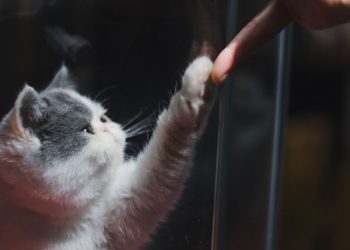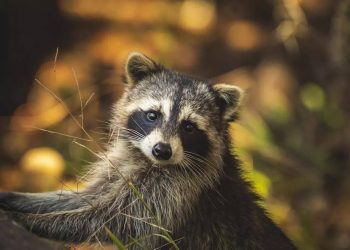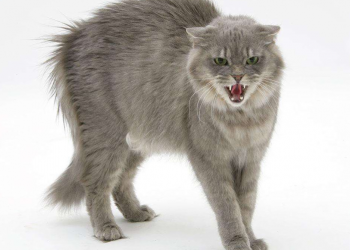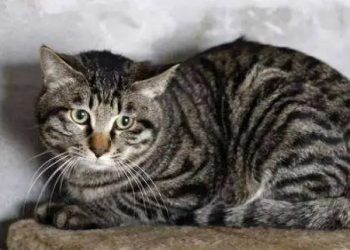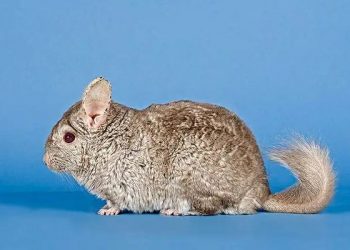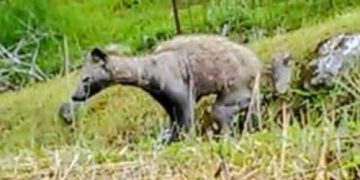Cane Corso, native to Sicily, Italy, originated in the 17th century, is an improved breed of the ancient Italian mastiff with a history of more than 2,000 years. This modified large bulldog did not survive in mainland Italy in the past, but was bred in Sicily. They used to be used to drive cattle to slaughterhouses and would be very active in dog fights.
Chinese name: Cathrow dog
English name: Cane Corso
Kingdom: Animal Kingdom
Door: Chordate
Subphylum: Vertebrate subphylum
Class: Lactation Class
Subclass: The subclass of true animals; also known as the subclass with placenta.
Item: Carnivora
Suborder: Canines
Branch: Canine
Subfamily: Canine subfamily
Genus: Canis
Breed: domestic dog
Subspecies: Italian Cathrow
Distribution: For many years, Castro has been a loyal and considerate companion to Italians.
Origin: Sicily, Italy
Origin period: 17th century
Lifespan: 11-12 years

Morphological characteristics of the Cathrow dog
The ideal Cathrow male dog should be 64-68 centimeters high at the shoulder, and the female dog should be 60=64 centimeters, and the shoulder height should be allowed to deviate by 2 centimeters up and down. The ideal male dog should weigh 45-50kg, and the ideal female dog should be 40-45kg.
Morphological characteristics
The Cathrow is brachycephalic. The outline of the head is angular due to the abduction of the zygomatic arch. The skin is compact, smooth and stretchable. Viewed from the front, the skull is broad and slightly raised. Viewed from above, the skull is square. The forehead segment is very pronounced, as the forehead is clearly convex and the brow bone is prominent.
Nose large, flat top, large nostrils, wide open, good mobility, moist, cool. Nose black. The muzzle is very broad and deep. Because the sides of the muzzle are almost parallel, and because the palate is wider, the muzzle is flat and square when viewed from the front. The bridge of the nose is straight. The upper lip droops to outline the bottom of the muzzle, and the lower part of the eye socket is slightly sunken. Tight lips. Viewed from the front, the upper lip forms an inverted “U” shape. The bottom edge of the upper lip is prominent. The pigment of the lips is black. The mouth is broad, powerful, and thick. The jaws are very powerful. The masseter muscle part of the cheek is full and obvious, but not hypertrophic or bloated. The teeth are white, huge, and fully embedded in the gums. The lower teeth protrude slightly outwards. Therefore, the bite is the lower convex palate. The eyes are of medium size relative to the whole dog. The shape of the eyes is approximately oval, with slightly protruding eyeballs and black rim pigment. Eyes witty, alert. The ears are covered with shorter hairs, are triangular in shape, have thicker cartilage, are set high at the base, and hang over the cheeks. The ears are slightly flared at the junction of the cheeks, protruding and becoming semi-stand when the dog is alert.
The top line of the neck is slightly curved. Length equal to that of the head, oval, strong, muscular, with a distinct point of separation from the back. The skin at the base of the neck has a crop structure. The back is straight. The withers rises distinctly from the topline, above the hips. Broad and muscular, with a slight upward trend from topline to neck.
The loin is short and broad, well connected to the back and hips, well muscled and strong. The buttocks are long, broad, and rounded due to well-developed gluteal muscles. The hips are slightly inclined. The chest is broad, sloping, and abducted, with well-developed muscles.
The position of the tail root is very high, and the tail root develops from the thick to the tip and does not become thinner.
The forelegs, viewed from the front, are perpendicular to the body, and the height at the elbow is half the height at the withers. Strong and powerful.
Shoulders are long, sloping, and strong, filled with long, fibrous, powerful and well-developed muscles. upper arm
Slightly longer than shoulders, strong, well-boned and muscular. The elbows are long, prominent, close to the body, but not close to the rib drums, covered by thin skin, like the thinner skin of human elbows, parallel to the plane of the torso. The forearm is vertical, oval, and muscular. The wrist is sloping, broad, mobile and thick. The ball joint is significantly smaller than the forearm, but is very strong, sloping, and elastic. The hind legs are vertical when viewed from the front and the side. In harmony with the entire body of the dog, it is strong and powerful.
The thighs are long, broad, and muscular, with a particularly pronounced buttocks.
The coat is short but not smooth, vitreous, shiny, velvety, stiff, dense, with a slight undercoat that thickens in winter. Fleeceless. Muzzle hair is very short, smooth, and velvety. Colors: Black, Lead Gray, Dark Blue, Light Gray Fawn, Deer Brown, Dark Fawn and Tiger.

Cathrow character traits
The character of the Cathrow is proportional to his appearance. He is very brave and resilient. This dog has excellent endurance, so once he fights, it is often a bloody battle to the end, and the realm of life and death. Until complete victory or complete defeat (severely wounded or killed).
The ancestors of the Cathrow once fought with bears, even lions, tigers and other large beasts in the ancient Roman arena. The most glorious history of the Cathrow is that it served in the ancient Roman army, accompanying the escort owner and rushing to kill directly on the battlefield. Very loyal to the owner, very docile to other members of the family, likes to play with children, and very tolerant of children’s excesses. Cathrows are also smart and easy to train. However, the temper is more stubborn, so pay attention to the method and give more guidance. However, the Cathrow dog has a strong desire to dominate, especially the male dog. The obedience must be cultivated well, and the cultivation of obedience must run through the dog’s life. It is not difficult to cultivate the obedience of Cathrow dogs, but it must be done, otherwise the consequences may be serious. The Cathrow is wary of strangers and can be moderately friendly, but not enthusiastic or aggressive. But for those who might pose a threat or violate its master, it will immediately launch a relentless attack. The Cathrow is an excellent guard dog.
The Cathrow is very loyal and likes to please its owner in a quiet room. The Cathrow has a very high IQ and trainability. Lively with a mind of his own, he is an unparalleled watchdog and guard dog. The Italian Cathrow is great with children and other family members. tame and obedient to their masters. They are guarded but very gentle. The Cathrow has a very stable personality. They are very fond of following their masters, and when necessary it becomes a fierce and brave guardian to defend their family, members and possessions. The Cathrow is not a fighting dog. They were used as working dogs hundreds of years ago. They don’t pick quarrels and cause trouble, but on the other hand they won’t give in to other dogs. It is aggressive towards strangers and dogs. When it is still a puppy, it needs to undergo strict socialization training. The Cathrow is a responsible companion dog. Suspicion of strangers, but not suspicious of its family members. It will show tolerance towards strangers if its owner is present.

Cathrow dog care common sense
Compared with the first-time adopters, when they just add new members, they often feel in a hurry. I don’t know how to take care of the Cathrow dog, but I’m afraid it will melt when I hold it in my mouth, and I’m worried that it will hurt when I hold it in my hand. This is the voice of many first-time adopters. So how exactly do we care for a Cathrow puppy?
Eyes: Dogs will scratch with their claws if their eyes are uncomfortable. When they go out, they are scratched by branches and other objects or play with other pets, which can easily damage their eyes and cause corneal ulcers. The changes in the eyes are a reflection of the disease in a certain part of the body, so regular inspection and management of the dog’s eyes is conducive to disease prevention and treatment.
Teeth: Bad breath is a harbinger of oral diseases. This is due to the proliferation of bacteria remaining in the teeth or the inflammation of the gums. It is easy to cause dental caries if not treated in time. Check your dog’s teeth and gums regularly, or use a toothbrush to remove residue from between the teeth.
Ears: Dogs often shake their heads, scratch their ears, and have pungent secretions, all of which are signs of ear disease. The reason for ear disease is that some dogs have hair growing in their ears, which cannot be cleaned for a long time. When bathing, water is poured into the ears. But I don’t know, so you should use ear drops and other medicines to clean your ears regularly, which can also prevent the occurrence of ear mites.
Fur: The dirt or hair on the dog’s fur is a hidden danger of skin disease, so it needs to be combed and bathed regularly. Note that because the dog’s skin has no sweat glands, it must be bathed with a pet-specific bath.
Anus: If the dog keeps licking the anus or sitting on the ground and rubbing forward, it means that the anal glands are not smooth and need to be emptied. If not treated in time, the skin around the anus may become purulent and ulcerated due to inflammation.
Nails: If the dog’s nails are too long, it will deform the bones or joints and affect the movement. Some nails will pierce the foot pads, causing ulceration and inflammation. They may also be caught during walking, causing the nails to break. Bleeding, so should be trimmed regularly. If the owner is not very professional, it is recommended to take the dog to the pet store and let the groomer cut it, because the dog’s nails have blood lines, and the blood will be cut accidentally.

Cathrow Dog Breeding Points
Raising a Cathrow puppy is like taking care of a child who can’t walk. In this process, how should we feed the Cathrow puppy? How should the staple food be chosen? It is said that dog food is the healthiest for dogs, so what brand of dog food is more suitable for puppies?
Cathrow baby feeding
The 2-3 month old Cathrow baby is still very small. The 2 month old baby needs to be fed 4 meals a day, and the daily food intake is 3% of its body weight. You can divide it into 4 parts and feed it to the baby, and it will grow to 3 months. It can be changed to feed 3 when it grows up. Also, because the baby is small and doesn’t know how full it is, it makes people feel very hungry. Remember that the puppy is hungry and can’t support it, so don’t feed too much. And put some drinking water for the baby.
Cathrow baby food
As for dog food, it depends on your financial situation. If you can eat from the young crown, then buy Kabi, which is the most cost-effective in American magazines. Plus the freight is slightly more expensive than GN, but the price/performance ratio is really high.
Snacks can buy chicken jerky or dog biscuits for the baby. In fact, the snacks are mainly used during training. Hehe~~ There are delicious snacks, I am afraid that the baby will not learn, be patient, the Cathrow is very smart.

